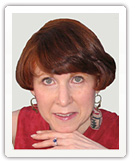E-Tips: Multi-Generational Solutions Archives
Reinvention of the Work Lifecycle: Flex in the Middle
Sometimes the controversial makes a lot of sense. A post a few weeks ago on the Employee Evolution blog, The New Work-Life Balance, by Ryan Healy, a 23 year old relatively newly minted entrepreneur, examines the typical career and work intensity progression and concludes the system seems “a little backwards.”
Healy wrote, “If you want to have a real shot at succeeding as an entrepreneur or in any other demanding career, you need to have the desire and ability to work 24 hours a day. And this doesn't leave much time for a personal life.” He went on to say that the personal life of people in their 20s could take a back seat to work if you want to make that choice. But a personal life in one's 30s or 40s is likely to include a spouse and children, which should not “take a back seat to work.” So if organizations expect young workers to wait around for 5-20 years before they are promoted to partner or VP, it happens just when they want to be able to spend more time participating in the most important years of their kids' lives, “only to retire when the kids are leaving home, heading off to start their career.” What's wrong with this picture?
Healy says that's what explains Generation Y's rush to get ahead quickly – the impatience. He recommends working at an intense pace during one's 20s to get as far as possible and having a loose plan of how to cut back when the family should take center stage.
Difficult as it is still today to implement, I think you have to admit this makes some sense. But what does it mean for a restructuring of the work lifecycle? Should work expectations be shifted to plan for intense work activity for the under 30s and over 55s? Does that mean reinvigorated interest in career and more work opportunities for people in their 50s, 60s and beyond?
This is a lifecycle planning issue as well as a way to address attitudes and expectations of the Baby Boomer, Generation X and Gen Y/Millennials currently in the workplace. It has affected, and is likely to affect every generation past, present and future. However there are a few differences from the past that may influence how we as a society respond and act to make choices and policy:
- The potential Baby Boomer brain drain if large numbers retire at the traditional age range.
- The countertrend of many Boomers' desire or need to continue to work at full time or reduced hours capacity.
- The unwillingness of many Generation Xers to work continually at the intensity (and ever increasing number of hours) that has become the norm in many industries. I must point out that this is many more hours in a higher pressure environment than Boomers and Traditionalists endured at a similar age – though granted the Xers are paid more in current dollars than there predecessors were.
- The eagerness of many Millennials to make a running start and achieve career success quickly taking on new challenges at a faster than previously typical pace; their impatience resulting in frequent moves if there is little opportunity.
Many industries have begun to offer incentives for Boomers to stay on and keep working longer. We are bound to see this trend accelerate given the brain drain organizations face. They are making efforts to assure knowledge transfer, mentoring, and capacity for short-term projects or ongoing ones requiring shorter hours. Approaches are aimed at both stemming the brain drain of seasoned workers and also compensating for the high turnover of mid-level Gen Xers.
Since many Boomers want to stay involved and continue to contribute, perhaps a new informal workplace pact can result. Might we envision flexibility based on cooperation of the prime-time family-centric workers and the empty-nesters to provide for what each individual prefers and still retain the knowledge base and experience while increasing the willingness to coach and mentor? Perhaps, just perhaps, we are seeing the beginnings of a reasonable work lifecycle shift.
What do you think? Please share your observations and thoughts.
Phyllis
© Phyllis Weiss Haserot, 2008. All rights reserved.
Check out *Next Generation, Next Destination*, our blog about transitioning planning and the generations. Visit, comment and subscribe by RSS feed or e-mail. http://www.nextgeneration-nextdestination.com.
For coaching, training and special programs on inter-generational relations and maximizing the potential of young professionals, call Phyllis for an exploratory talk or complimentary coaching session at 212-593-1549 or e-mail at pwhaserot@pdcounsel.com

